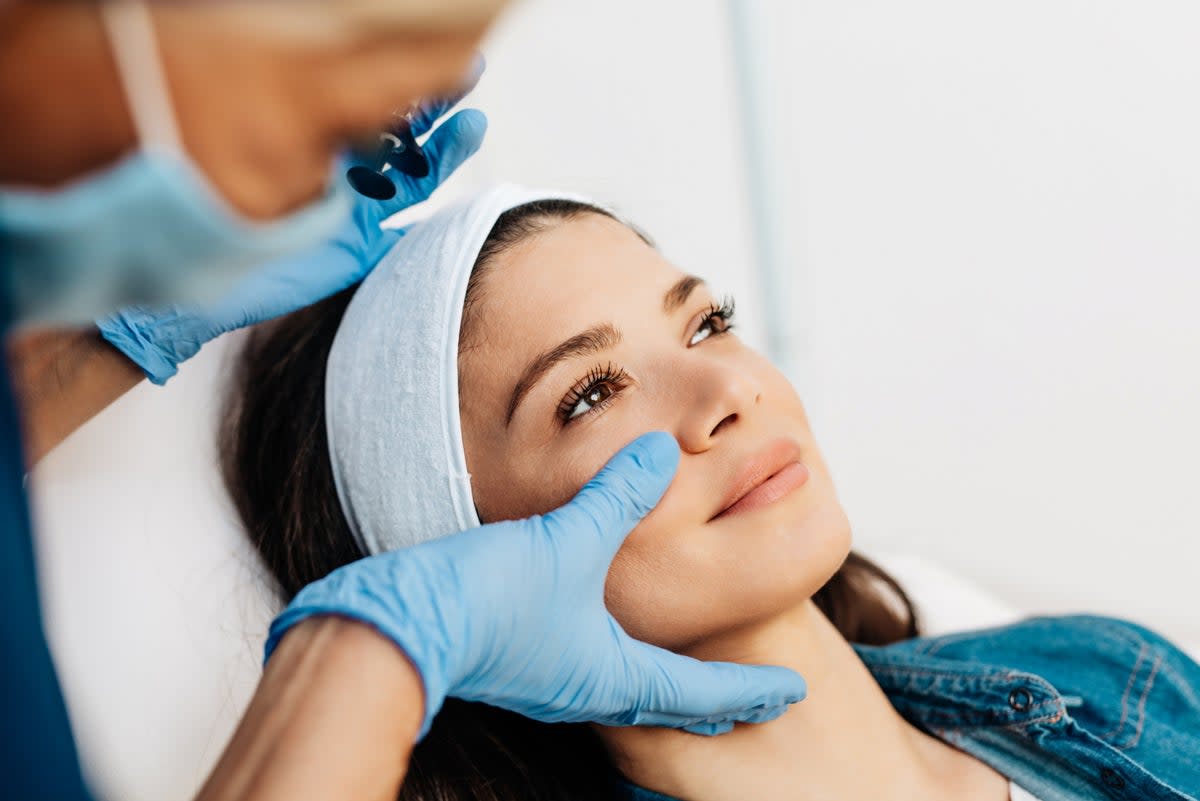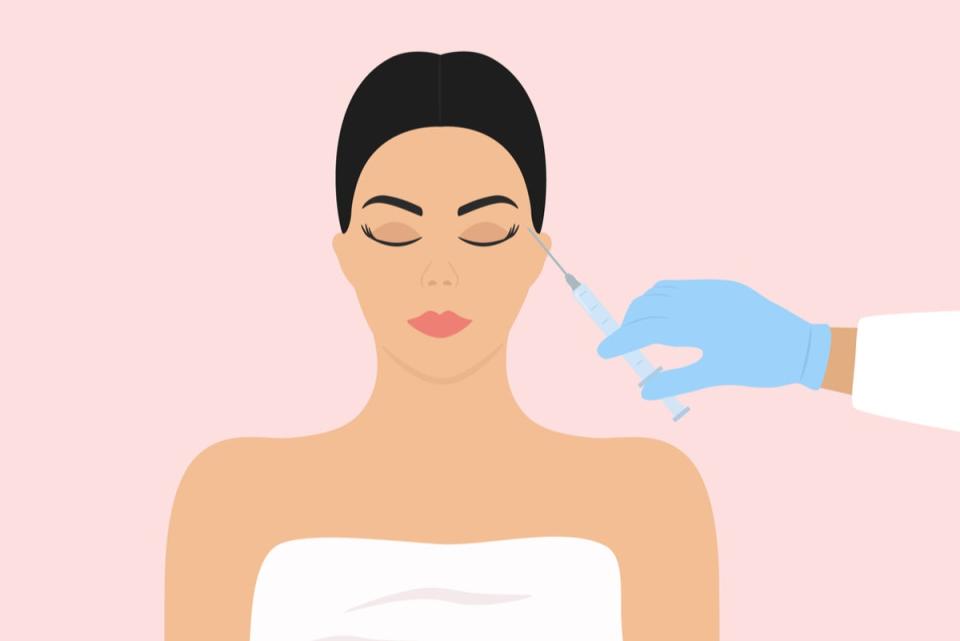Preventative Botox is on the rise – but it might do more harm than good

When I grew up in the Noughties, “Botox” felt like a catch-all term synonymous with a certain type of surgically enhanced face: frozen, puffy, unable to emote. But in the ensuing decades, the reputation of this wrinkle-smoothing injection has changed. The treatment is no longer solely associated with permanently startled eyebrows. Practitioners (the reputable ones at least) tend to lean towards a “less is more” approach. And it’s not something that’s whispered about or considered a dirty secret any more, either.
A quick scroll through social media shows – for better or worse – just how normalised these jabs have become. But what is particularly striking is the youth of those singing Botox’s praises: they’re often in their twenties and thirties. “I got baby Botox and now I’m obsessed!” is the sort of caption that crops up again and again under videos of obviously young women; “come with me to get Botox for the first time” is another. Offline, I’ve had conversations with friends in their twenties where they’ve bemoaned how they “need baby Botox” to sort out any incipient lines. Many of my peers in their early thirties have either already taken the plunge or are open about the fact that it’s only a matter of time before they do so (I know, I know: god forbid our faces show any signs of wear and tear).
If you’re an image-conscious member of Gen-Z or a younger millennial, “baby Botox” is clearly one of the beauty buzzwords du jour. But what does it actually mean? Botox itself is a neuromodulator, a type of injectable that temporarily disrupts the nerve signals to the muscles, preventing them from contracting and reducing the appearance of wrinkles. There might also be a “feedback effect”, explains Mr Naveen Cavale, consultant plastic surgeon at Real Clinic. If you freeze, say, your frown lines, then you can’t use them, he explains. And so “you get out of the habit of using [them]”, and slow down the wrinkle formation process.
The term baby Botox just refers to a slightly different approach to application. “You’re using a smaller dose of Botox, more evenly spread out,” says Dr Ashwin Soni, plastic surgeon and founder of the Soni Clinic. “What that results in is more of a natural look, especially when people express [emotion] or animate [their faces].” The technique, he says, is his “preferred way of doing Botox”, and he has seen “a huge rise” in demand over the last couple of years (stats also show that our collective desire for all Botox treatments has spiked recently: in 2022, the British Association of Aesthetic Plastic Surgeons reported that demand had risen by 124 per cent compared to the previous year).
What makes things a little more confusing is that some practitioners and clients seem to also use “baby Botox” to refer to so-called “preventative” Botox treatment. The smooth-faced young women that you might see documenting their treatment process on TikTok are hoping that by getting their muscles injected before any wrinkles have properly set in, they will stop any lines from forming (because, as per that “feedback effect”, they won’t be able to move or use those muscles).
Soni says that the youngest patient he has seen for Botox was probably around the age of 25, but she had very prominent lines when her face was at rest, and had been bothered by them for years. But most women her age just don’t have the sort of deep, static wrinkles that Botox is designed to eliminate. As such, Soni doesn’t advocate “doing Botox on somebody who doesn’t have any lines to treat just for the ‘preventative’ element – that doesn’t make any sense to me. You don’t need to do it before [wrinkles] actually develop. If somebody has a smooth forehead with no lines at rest, there’s no indication to treat them … If somebody came to me at [age] 22 and didn’t have lines and said, ‘I really want Botox,’ I wouldn’t do that, because I don’t think that’s right. They don’t need to. Number one, it’s an investment financially. But also, more importantly, you don’t need to do it for the sake of doing it.”
If somebody has a smooth forehead with no lines at rest, there’s no indication to treat them
Dr Ashwin Soni, plastic surgeon
In other words, there’s little point getting started on the injections just because you’re worried that one day, you might get a wrinkle: you need to wait for said wrinkle to actually form (shock horror) and then treat it if you so wish. Plastic surgeon Cavale is particularly sceptical about “preventative” treatments – because, he suggests, there is a chance that young customers might be setting themselves up “for bigger, more risky and costly [procedures] in the future”. When we tinker with our faces, “every action has a reaction”, he says. So, if you can no longer lift your brows, for example, then the lowering muscles “are now acting unopposed, because your face is a balancing act – your ‘happy’ [expression] muscles, your ‘sad’ muscles”. If people start to notice a drooping effect as a result, they might then decide to undergo more invasive surgical treatments such as brow lifts or eyelid surgery to counter that. “Botox and fillers are very much a gateway drug when it comes to aesthetics,” he cautions, adding: “We might be pushing people into having bigger and more invasive things, because they were pushed into this stuff at a younger age … We shouldn’t be setting people up for something that they might not have needed in the future.”

Side effects like these might occur when the person holding the needle lacks experience or doesn’t properly understand the face’s anatomy: they might over-inject, or target the wrong areas. Younger customers tend, as a general rule, to have less disposable income. It makes sense, then, that they might be “driven by cost” and opt for cheaper, less experienced practitioners, says Soni, who often ends up seeing patients who have experienced issues after initially heading to other, less reputable clinics (that are also more likely to take on the younger clients that someone like him would turn away).
Shockingly, you don’t have to have a licence in order to inject Botox or fillers in the UK; last year, an analysis of the industry by researchers at University College London found that less than a third of cosmetic injections like Botox were administered by doctors. The government has announced plans to introduce a licensing scheme, but this is currently in the consultation stages. “We, as the experienced providers in this country, take care of a lot of problems coming from other clinics because of the safety and regulation issues that we have in the UK,” Soni adds. “And that’s hard to watch.”
It might be setting you up for bigger stuff: more surgery, more cost, more risk, more downtime
Mr Naveen Cavale, plastic surgeon
The “big issue” that Cavale has with “preventative” Botox is that “it isn’t being sold with a health warning”. He believes that practitioners should have to tell their young clients that “it might be setting you up for bigger stuff: more surgery, more cost, more risk, more downtime. They might be preventing one thing but they might be creating other [issues].” He has noticed that clients are turning away from the overfilled look (plenty of celebrities and influencers have documented the process of getting their facial fillers dissolved online, too) and suggests that we might “start seeing a reaction against [overuse of] Botox in the future. But I think at the moment, there is still very much the perception that Botox is just a little quick fix”.
But if you are still set on Botox? Soni recommends opting for a practitioner who has a good working knowledge of facial anatomy; they should, he adds, offer you an in-depth consultation with your practitioner beforehand (he tends to meet with prospective clients for about an hour). “You shouldn’t walk away from a consultation feeling like you have more insecurities, or like somebody has pushed something on you,” he says. “You should walk away feeling better informed than you did before.” Cavale adds that potential customers need to be “really careful, sceptical and inquisitive” and, crucially, wary of “buying into a bit of hype”. And another question to ask ourselves? Why are we so obsessed with eliminating any signs of ageing, even before they’ve had a chance to really take hold?

